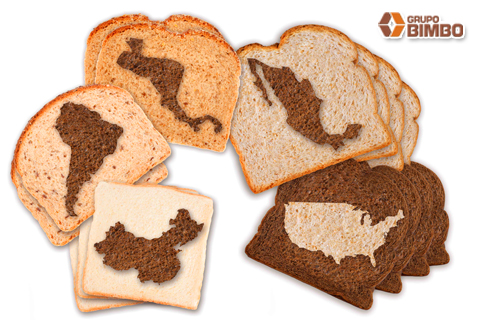 for the world’s top-50 FMCG firms has halved from 5.6% in 2012 to 2.9% in 2013, as a result of exchange rate volatility, falling commodity costs and increased competition from local players – according to research unveiled by OC&C Strategy Consultants in collaboration with The Grocer.
for the world’s top-50 FMCG firms has halved from 5.6% in 2012 to 2.9% in 2013, as a result of exchange rate volatility, falling commodity costs and increased competition from local players – according to research unveiled by OC&C Strategy Consultants in collaboration with The Grocer.OC&C’s annual Global 50 Index, the only analysis of the financial statements of the top-50 FMCG firms globally, has revealed that companies are struggling to find growth at the same pace they have seen in recent years. Particularly in the BRIC markets, global companies are losing market share to local players. In 2013, the Global 50 lost 0.7% points of their market share of the market in China, 1.3% points in India, 1.4% points in Brazil and 0.4% points in Russia. In contrast the picture on profitability is more positive – gross margins have grown by 0.7% in 2013 compared with 0.1% in 2012 and EBIT margins are up by 0.9%, as companies have refocused activities on rebuilding profitability.
Although the BRICs have been proving more challenging, global FMCG firms are identifying new areas of growth. 70% of firms in the Global 50 who reported underperformance in a BRIC country in their annual report, named a MINT country (Mexico, Indonesia, Nigeria and Turkey) as a key growth market. Early movers to the MINTs are establishing very high market shares. In Nigeria, for example, Coca-Cola has built a 41% share of the soft drinks market compared to 26% globally, and Nestlé has built a 69% share of the coffee market versus 22% globally.
Will Hayllar, Partner at OC&C Strategy Consultants, says: “Although FMCG firms have seen sales growth slow considerably, their renewed focus on rebuilding profitability is proving successful. Companies have been taking a more cautious and focussed approach, and as our research shows, more than 80% of innovation investment in 2013 focused on core products rather than new ventures. Similarly, firms are increasingly selling off businesses that are a poor fit with their core operations, and only buying firms that will strengthen their market position in a key market rather than diversify.
“New emerging markets like Mexico, Indonesia, Nigeria and Turkey, that have weaker local competition, are providing a welcome wave of growth opportunities for the world’s largest FMCG firms. Companies that are struggling to establish a strong foothold in the BRICs need to consider these new markets as opportunities for expansion and consolidation.”
In contrast to established Western multinationals, local BRIC firms are enjoying a period of sustained growth. This year has seen the first Chinese firm – Tingyi, a company specialising in instant noodles and beverages – enter OC&C’s Global 50 index at number 41, with two other Chinese firms, Yili Group and Mengniu, narrowly missing out on a top-50 spot. In addition, the four Global 50 firms based in emerging markets – JBS and Brazil Foods in Brazil, Grupo Bimbo in Mexico and Tongyi in China – grew by 14.6% in 2013.
Will Hayllar continues: “Tingyi exemplifies many of the features that make local players such formidable competitors in BRIC markets: rapid innovation and a distribution network that is hard for an international player to match. Developing local partnerships is one way established FMCG firms can compete with these local players. Take PepsiCo and Tingyi as an example – when the soft drinks giant realised that growing its already established distribution in China would be costly, they piggybacked on Tingyi’s vast network. In 2013, Pepsi’s drinks business grew by 20% and became profitable, and Tingyi saw a 13% local currency sales growth as a result.”





